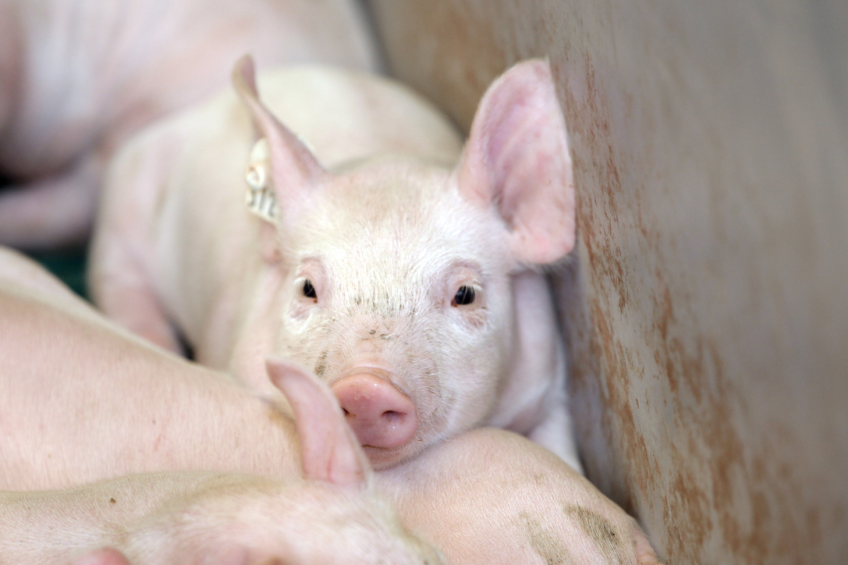MRSA in Danish pigs – what can we learn?

The Danish Veterinary and Food Administration has just published a MRSA risk assessment, which really includes some disturbing information on the rapidly growing incidence of infection in recent years in pig farms and associated human cases.
EFSA (European Food Safety Authority – 2009) published a report on a Baseline Survey of the prevalence of MRSA (methicillin-resistant Staphylococcus aureus) in the EU, for 2008, in breeding holdings (producers of breeding stock) and production herds (producing weaners, growers and finishers) and found that in the Netherlands, the country that first recognised the problem in 2005, had a prevalence of 12.8% and 17.9%, respectively of the pig adapted clone of MRSA CC398. Spain had a high 46% and 50.2% prevalence, respectively, but Denmark had only 0% and 3.5% figures. In the UK and Norway, there was 0% prevalence reported on both counts.
Prevalence of MRSA CC398 in Danish farms
In the recent Danish studies carried out in 2014, they found that 63% of breeding herds and 68% of finisher herds were positive carriers of MRSA. This is an explosion of prevalence over the last 6 years.
In the report it did not specify what type of breeding herd was included and it reported that in 2010 the incidence was only 16% (see Figure 1).
Human cases of MRSA CC398
At the same time the number of isolations from human carriers of MRSA CC398 also increased from 14 in 2007 to 643 in 2013, and those showing not only colonisation of the nose but infections increased from 6 to 156, respectively (see Figure 2).
Of the human cases, 87% were associated with farmers, stock persons and families involved with pigs. Fortunately, the spread to the community is still low but in this time there were 7 cases of bacteraemia, where the bacteria got into the blood, rather than say just causing a skin or wound infection, and 3 cases died. It has been reported that the cases dying had a number of serious underlying diseases.
Antimicrobial use and MRSA
The Danes have taken the lead in the EU in reducing antimicrobial use in animals. They have one of the lowest use rates in comparison with other Member States according to ESVAC and also were one of the first to withdraw the use of antibiotic growth promoters in 1999, withdrew fluoroquinolones in 2003 and also in 2010 voluntarily withdrew the use of cephalosporins in pigs. In 2008 the use of antimicrobials in animals was 120 tonnes and in 2013, 116 tonnes and approximately 75% of these figures are used in pigs. Has this had any effect? It does not appear to be the case (see Figure 2).
Biosecurity
The incidence of MRSA on pig farms in Denmark has shot up, the incidence of cases in man, which is mainly associated with pig workers has also increased dramatically. The usage of antimicrobials and cephalosporins, in particular, has gone down. They do not seem to be correlated.
Movement of pigs especially down breeding pyramids was shown to be a highly important factor in the spread of the disease across Europe (EFSA, 2009). Has there been a change in MRSA status in the Danish breeding pyramids? The other concern is the export of live pigs for breeding and finishing, 33% of production is exported. This could also have a major impact on neighbouring countries regarding spread of the infection. Are we taking biosecurity seriously enough? Are we asking suppliers if they are free of MRSA?
Controlling MRSA in pigs
This is going to be a difficult one now. Norway has found that a few herds have been infected with MRSA and have killed out the herds, cleaned, disinfected and then restocked. This is fine when the number of infected herds is small. Can the Danes afford to do this? In the UK, we have had two reported cases in pigs, one in Northern Ireland in 2014 and they had been buying in Danish breeding stock directly. In England we have had one reported case this year but nobody seems to want to accept the responsibility to see how it got infected in the first place and make a decision what to do with it. Our National Pig Association very wisely produced guidelines regarding importing breeding stock from Europe that they should be tested for obviously notifiable diseases but also MRSA and PRRSV US strain, which mainly seems to have been successful and kept it out. They also prevented the mass import of weaners from the Netherlands for the same reason a few years ago.
With a new government in post in the UK, maybe they will take the Danish example of how things can go so rapidly wrong with MRSA in pigs and take a more active role in studying the epidemiology of how it got in here and possibly stamping it out, before it spreads into the national herd and starts causing problems in man. Our hospitals are already stretched and have made great progress in reducing hospital-acquired MRSA. Generally, reducing antibiotic use and zinc does not appear to be the answer or an effective approach but that could be the subject of another weblog.











